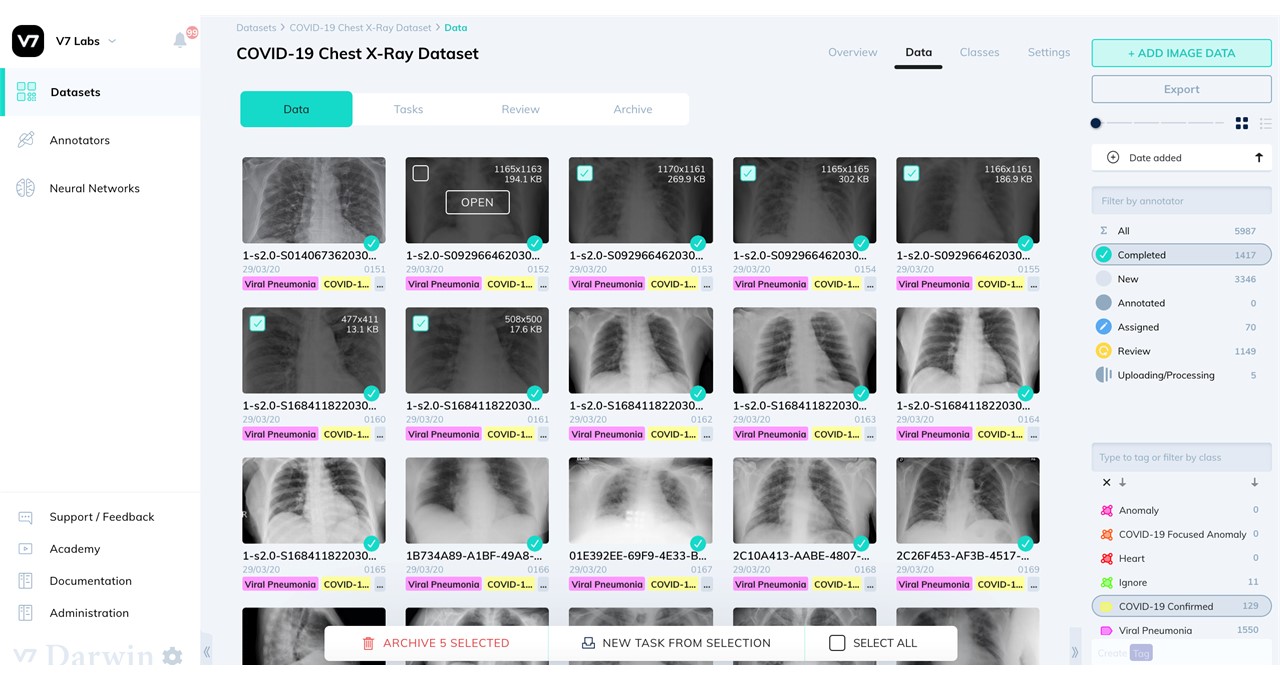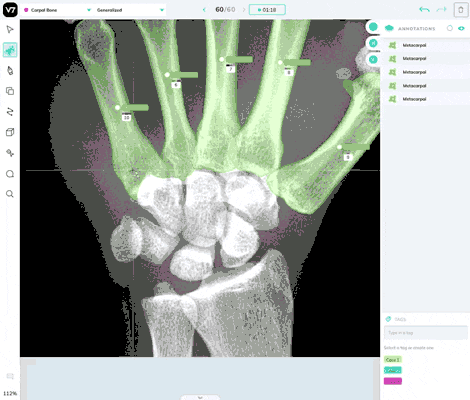Cells under a microscope, grapes on a vine and species in a forest are just a few of the things that AI can identify using the image annotation platform created by startup V7 Labs.
Whether a user wants AI to detect and label images showing equipment in an operating room or livestock on a farm, the London-based company offers V7 Darwin, an AI-powered web platform with a trained model that already knows what almost any object looks like, according to Alberto Rizzoli, co-founder of V7 Labs.
It’s a boon for small businesses and other users that are new to AI or want to reduce the costs of training deep learning models with custom data. Users can load their data onto the platform, which then segments objects and annotates them. It also allows for training and deploying models.
V7 Darwin is trained on several million images and optimized on NVIDIA GPUs. The startup is also exploring the use of NVIDIA Clara Guardian, which includes NVIDIA DeepStream SDK intelligent video analytics framework on edge AI embedded systems. So far, it’s piloted laboratory perception, quality inspection, and livestock monitoring projects, using the NVIDIA Jetson AGX Xavier and Jetson TX2 modules for the edge deployment of trained models.
V7 Labs is a member of NVIDIA Inception, a program that provides AI startups with go-to-market support, expertise and technology assistance.
Pixel-Perfect Object Classification
“For AI to learn to see something, you need to give it examples,” said Rizzoli. “And to have it accurately identify an object based on an image, you need to make sure the training sample captures 100 percent of the object’s pixels.”
Annotating and labeling an object based on such a level of “pixel-perfect” granular detail takes just two-and-a-half seconds for V7 Darwin — up to 50x faster than a human, depending on the complexity of the image, said Rizzoli.
Saving time and costs around image annotation is especially important in the context of healthcare, he said. Healthcare professionals must look at hundreds of thousands of X-ray or CT scans and annotate abnormalities, Rizzoli said, but this can be automated.
For example, during the COVID-19 pandemic, V7 Labs worked with the U.K.’s National Health Service and Italy’s San Matteo Hospital to develop a model that detects the severity of pneumonia in a chest X-ray and predicts whether a patient will need to enter an intensive care unit.
The company also published an open dataset with over 6,500 X-ray images showing pneumonia, 500 cases of which were caused by COVID-19.
V7 Darwin can be used in a laboratory setting, helping to detect protocol errors and automatically log experiments.
Application Across Industries
Companies in a wide variety of industries beyond healthcare can benefit from V7’s technology.
“Our goal is to capture all of computer vision and make it remarkably easy to use” said Rizzoli. “We believe that if we can identify a cell under a microscope, we can also identify, say, a house from a satellite. And if we can identify a doctor performing an operation or a lab technician performing an experiment, we can also identify a sculptor or a person preparing a cake.”
Global uses of the platform include assessing the damage of natural disasters, observing the growth of human and animal embryos, detecting caries in dental X-rays, creating autonomous machines to evaluate safety protocols in manufacturing, and allowing farming robots to count their harvests.
Stay up to date with the latest healthcare news from NVIDIA, and explore how AI, accelerated computing, and GPU technology contribute to the worldwide battle against the novel coronavirus on our COVID-19 research hub.

